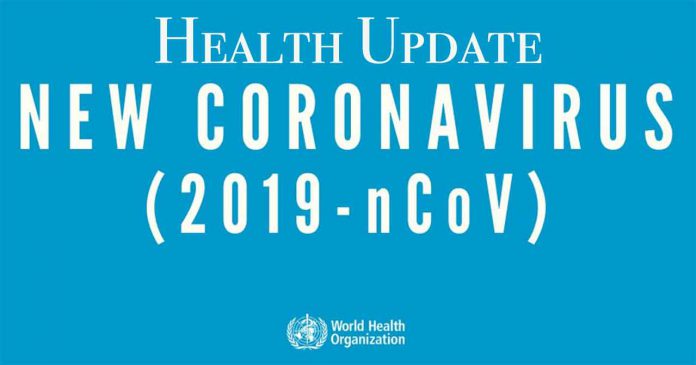The WHO Technical Advisory Group on COVID-19 Vaccine Composition (TAG-CO-VAC) continues to meet regularly to assess the implications of SARS-CoV-2 evolution for COVID-19 vaccine antigen composition and advise WHO on whether changes are needed to the antigen composition of future COVID-19 vaccines.
In April 2023, the TAG-CO-VAC indicated that the advisory group would convene at least twice in 2023: once in May 2023 and again, approximately 6 months later. At each meeting, recommendations to either maintain current vaccine composition or to consider updates will be issued. This frequency of evidence review by the TAG-CO-VAC is based on the kinetics of vaccine-derived immunity and the need for continued monitoring of the evolution of SARS-CoV-2, and will be adjusted if and as necessary. The TAG-CO-VAC met on 11-12 May 2023 to review the genetic and antigenic evolution of SARS-CoV-2, the performance of currently approved vaccines against circulating SARS-CoV-2 variants and the implications for COVID-19 vaccine antigen composition.
As previously stated by the TAG-CO-VAC, the objective of an update to COVID-19 vaccine antigen composition is to enhance vaccine-induced immune responses to circulating SARS-CoV-2 variants. This statement and the recommendation for change is intended for all vaccine manufacturers and is intended to inform future formulations of COVID-19 vaccines.
The TAG-CO-VAC recognizes and reiterates that currently approved COVID-19 vaccines, including those based on the index virus, continue to provide substantial protection against severe disease and death, which is the primary objective for COVID-19 vaccination. Currently approved COVID-19 vaccines should continue to be used in accordance with the current WHO SAGE Roadmap, published in April 2023. Notwithstanding the protection against severe disease, protection against symptomatic disease is limited and less durable. New formulations of COVID-19 vaccines are needed to improve protection against symptomatic disease.
Evidence reviewed
The published and unpublished evidence reviewed by the TAG-CO-VAC included: (1) SARS-CoV-2 evolution, including genetic and antigenic characteristics of earlier and current SARS-CoV-2 variants, including XBB.1 descendent lineages, and its impact on cross-neutralization and cross-protection following vaccination and/or infection; (2) Vaccine effectiveness (VE) of currently approved vaccines during periods of XBB.1 descendant lineage circulation; (3) Antigenic cartography analyzing antigenic relationships of SARS-CoV-2 variants using naïve animal sera and human sera following vaccination and/or infection; (4) Preliminary preclinical data on immune responses in animal models, following infection with XBB.1 descendent lineages; (5) Preliminary preclinical immunogenicity data on the performance of candidate vaccines with updated antigens (data not shown); and (6) B cell memory responses following vaccination and/or infection.
Further details on the publicly available data reviewed by the TAG-CO-VAC can be found in the accompanying data annex. Unpublished and/or confidential data are not shown.
The TAG-CO-VAC acknowledges the limitations of the available data:
- While the trajectory of further SARS-CoV-2 evolution indicates that XBB will likely be the progenitor of SARS-CoV-2 variants in the near term, the timing, specific mutations and antigenic characteristics, and the potential public health risks of future variants remain unknown;
- Data on cross-reactivity (breadth) of immune responses elicited by currently circulating SARS-CoV-2 variants are limited. The majority of the available clinical and preclinical data are on the recent variants XBB.1 or XBB.1.5, but there is minimal information on other current variants of interest or variants under monitoring;
- Data on immune responses over time following infection with currently circulating SARS-CoV-2 variants are limited;
- Though neutralizing antibodies titers have been shown to be important in protection from SARS-CoV-2 infection and in estimates of vaccine effectiveness, there are multiple layers of immune protection elicited by infection and/or vaccination. Data on the immune response specific for XBB.1 descendent lineages are largely restricted to neutralizing antibodies and are limited for other aspects of the immune response, including cellular immunity;
- Data on the protection conferred by hybrid immunity (i.e. combination of infection- and vaccination-induced immunity) are largely derived from populations that predominantly received an mRNA booster dose;
- Data on VE of current COVID-19 vaccines, including index-virus based and bivalent mRNA vaccines, against XBB descendent lineages are limited and estimates during periods of XBB.1 descendant lineage circulation are only available for mRNA vaccines;
- Data on candidate vaccines that include an XBB.1 descendent lineage are limited to animal models.
A summary of available evidence and the recommendations that follow were discussed by the TAG-CO-VAC and provided to WHO.
Summary of available evidence
- In the fourth year of the pandemic, there is high seroprevalence in the global population as a result of vaccination and/or infection, and immunological profiles against SARS-CoV-2 are highly heterogeneous (i.e. individuals have been infected with different variants and/or vaccinated using a variety of vaccine platforms).
- There continues to be substantial genetic and antigenic evolution of the spike protein of SARS-CoV-2, and the evolutionary trajectory continues to diverge from the index virus. Despite increasing gaps in genomic surveillance globally, the available sequencing data indicates that the index virus and other early variants (e.g., Alpha, Beta, Gamma and Delta) are no longer detected in humans.
- As of May 2023, the XBB.1 descendent lineages currently predominate globally (i.e., XBB.1.5, XBB.1.16, XBB.1.9).
- As described in the WHO Technical Advisory Group on SARS-CoV-2 Virus Evolution XBB.1.5 Updated Risk Assessment and the XBB.1.16 Initial Risk Assessment, XBB descendent lineages, including XBB.1.5 and XBB.1.16, are highly immune evasive, with XBB.1.5 being one of the SARS-CoV-2 variants with the greatest magnitude of immune escape from neutralizing antibodies to date.
- Estimates of VE against currently circulating SARS-CoV-2 variants, including XBB.1 descendent lineages, are very limited in terms of the number of studies, vaccine products evaluated, and populations assessed; some studies show similar VE against BA.5 descendent and XBB.1 descendent lineages, while others suggest reduced VE during periods of predominance of XBB.1 descendent lineages.
- Sera from individuals who have received two, three or four doses of index virus-based vaccines, or a booster dose of a bivalent (BA.1- or BA.4/5- containing) mRNA vaccine show substantially lower neutralizing antibody titers against XBB.1 descendent lineages, as compared to titers specific for the antigens included in the vaccine. Individuals with hybrid immunity due to any SARS-CoV-2 infection show higher neutralizing antibody titers against XBB.1 descendent lineages as compared to responses from vaccinated individuals who had no evidence of infection.
- There is in vitro evidence that immune imprinting, which is a phenomenon in which B cell memory recall responses towards previously encountered antigen reduce the response to new antigens, may be occurring. However, based on observational epidemiological studies to date, the clinical impact remains unclear.
- Preclinical data shared confidentially with the TAG-CO-VAC by vaccine manufacturers show that vaccination with XBB.1 descendent lineage-containing candidate vaccines (including XBB.1.5) elicits higher neutralizing antibody responses to currently circulating SARS-CoV-2 variants, compared to responses elicited by currently approved vaccines.
Recommendations for updates to COVID-19 vaccine antigen composition
There is ongoing and considerable genetic and antigenic evolution of SARS-CoV-2, high seroprevalence and heterogeneous population immunity to SARS-CoV-2. As current WHO SAGE policy specifies, vaccination programmes should continue to complete the primary series and booster dose(s) for high priority and medium priority groups. Furthermore, the WHO Global COVID-19 Vaccination Strategy, published in July 2022, also calls for vaccines with improved durability and breadth of protection.
Updates to vaccine antigen composition may enhance vaccine-induced immune responses to circulating SARS-CoV-2 variants, consistent with the previous statement by the TAG-CO-VAC published in June 2022.
As of May 2023, XBB.1 descendent lineages predominate SARS-CoV-2 circulation globally. In order to improve protection, in particular against symptomatic disease, new formulations of COVID-19 vaccines should aim to induce antibody responses that neutralize XBB descendent lineages. One approach recommended by TAG-CO-VAC is the use of a monovalent XBB.1 descendent lineage, such as XBB.1.5 (e.g., hCoV-19/USA/RI-CDC-2-6647173/2022, GenBank: OQ054680.1, GISAID: EPI_ISL_16134259 or WHO Biohub: 2023-WHO-LS-01, GenBank: OQ983940, GISAID EPI_ISL_16760602) as the vaccine antigen. Given the small genetic and antigenic differences from XBB.1.5, XBB.1.16 (e.g., hCoV-19/USA/MI-CDC-LC1038976/2023, GenBank: OQ931660 GISAID: EPI_ISL_17619088) may be an alternative. The spike antigens of both of these lineages are genetically and antigenically very closely related, with only two amino acid differences between XBB.1.5 and XBB.1.16 (E180V and T478R). Other formulations and/or platforms that achieve robust neutralizing antibody responses against XBB descendent lineages can be considered.
While currently approved COVID-19 vaccines, including those based on the index virus, continue to provide protection against severe disease, the TAG-CO-VAC advises moving away from the inclusion of the index virus in future formulations of COVID-19 vaccines. This is based on the following reasons: the index virus and antigenically closely related variants no longer circulate in humans; the index virus antigen elicits undetectable or very low levels of neutralizing antibodies against currently circulating SARS-CoV-2 variants, including XBB descendent lineages; inclusion of the index virus in bi- or multivalent vaccines reduces the concentration of the new target antigen(s) as compared to monovalent vaccines, which may decrease the magnitude of the humoral immune response; and immune imprinting due to repeated exposure to the index virus may reduce immune responses to new target antigen(s).
Further data requirements and considerations
Given the limitations of the evidence upon which the recommendations above are derived and that the evolution of the virus is expected to continue, the TAG-CO-VAC strongly encourages the generation of data on immune responses and clinical endpoints in humans who receive a COVID-19 vaccine with an updated composition, across different vaccine platforms, as well as further data on the performance of current COVID-19 vaccines against circulating SARS-CoV-2 variants. Additionally, the TAG-CO-VAC continues to encourage the further development of vaccines that enhance mucosal immunity because they may improve protection against infection and reduce transmission of SARS-CoV-2, in alignment with the WHO Global COVID-19 Vaccination Strategy, published in July 2022. Finally, it is imperative for multilateral organizations, governments and manufacturers to continue collaborating towards access to currently approved COVID-19 vaccines and to ensure equitable global access for vaccine(s) with an updated antigen composition as they become available.







